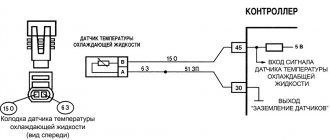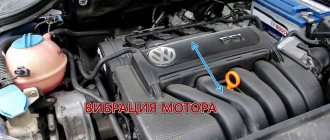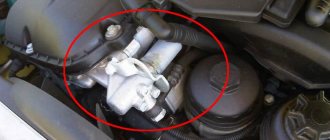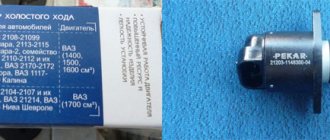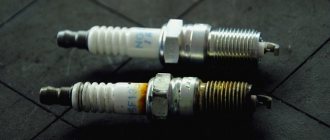08.05.2019
| (No votes) |
Issues discussed in the material:
- What is compression and what are its standards depending on the type of engine
- What are the causes and consequences of decreased compression
- How to check compression on a gasoline engine
- How to check compression on a diesel engine
If you have a car, then you have probably heard about the term “engine compression check” more than once. A drop in this same compression is fraught with a decrease in power and an increase in fuel consumption. And such an engine is often much more difficult to start. In this article, we will explain the concept of “compression” in simple words, talk about the reasons for its reduction and the consequences for the engine. We will also find out how often you need to check engine compression.
What is compression and what are its standards depending on the type of engine
Engine cylinder compression is a key indicator of the quality of the engine unit. These words mean the maximum air pressure that is created in the combustion chamber at the moment when the piston is at the highest point of the compression stroke. Several units of measurement for this parameter are accepted. The most common is kg/cm2 (the number of kilograms per unit area per square centimeter). It also happens that compression is indicated in atmospheres.
According to the compression value, engines were previously divided into forced (more than 9 kg/cm2), medium-boosted (7–9 kg/cm2) and unboosted (6–7 kg/cm2).
The diesel unit has outstanding compression values - from 28 kg/cm2 and above. Of course, diesel engines with a more modest 20 kg/cm2 were previously produced. This applies to engines produced in Russia. A compression variation in the cylinders of 2-3 kg/cm2 was allowed.
As for gasoline engines, currently a value of 10–13 atmospheres is the generally accepted normal value. This is true for both imported and domestic cars. On some cars, for example the VAZ tenth series, the compression in the cylinders is 11 atmospheres or higher.
What is compression?
The word “compression” comes from the Latin “compression”, which means “compression”. Those. Compression refers to the compression of gas that occurs due to the action of external forces in order to reduce the volume of gas and also increase temperature and pressure.
To understand what compression is in an engine, it is worth first understanding what an internal combustion engine consists of. It contains a cylinder block, valves, pistons with compression and oil piston rings, connecting rods and a crankshaft.
When the piston rises on the compression stroke, the valves are closed, so the fuel mixture occurs, and the maximum pressure is formed in the cylinder. And the digital value of this pressure represents the engine compression.
Compression is measured in pressure units - bar, kg/cm2, MPa.
Causes and consequences of reduced compression
The main reason for compression liquefaction is friction. Of course, this is counteracted by the protective film formed by the oil on the walls of the cylinder and piston. However, despite this protection, gradual wear still occurs. Layer by layer, the cylinder self-bores. As a result, leaks form between the piston rings and the cylinder. At the moment of compression, the fuel mixture leaks into the crankcase through these leaks. Engine efficiency decreases due to the fact that not all of the fuel is converted into useful energy.
We recommend
“Restoring a car after an accident: stages, choosing a service station, nuances” More details
However, there are other reasons that cause a drop in compression. For example:
- carbon deposits on the walls of the cylinder and piston;
- burnout of the piston bottoms due to high temperatures;
- deformation of valves, including their burnout;
- formation of cracks in cylinders;
- cylinder head gasket wear;
- Air filter contamination.
What are the consequences of a drop in compression? This directly affects the operation of the machine unit:
- there are difficulties starting the engine;
- failures occur in different operating modes;
- there are knocks and pops that can be easily heard;
- fuel consumption is steadily increasing;
- the pressure in the channels of the engine cooling system increases;
- Black smoke may come out of the chimney.
It can be concluded that engine compression can be significantly reduced for a number of reasons. What should an ordinary car owner do without the skills of a car mechanic? If you notice at least one of the above signs, you need to go to a diagnostic station as quickly as possible to check the compression in the engine cylinders. The price of the service may seem high, but you should not regret the possible expenses. Operating such an engine without repair can lead to much bigger problems in the future.
Reasons for low compression
As mentioned above, a decrease in compression occurs for several reasons, these are:
- engine service life;
- violation of maintenance (delayed oil change);
- use of low-quality oil;
- engine overheating;
- Driving with a cold engine (thermostat malfunction).
There are also reasons when additives will not help and repairs are needed, these are:
- piston burnout;
- valve burnout;
- burnout of the gasket between the cylinders;
- rings are stuck (sometimes “cured”).
Burnt out piston
Faults such as burnout are almost immediately noticeable, but some can only be determined after diagnosis.
Checking engine compression with your own hands without a compression gauge
There are only two tools to check this important motor parameter:
- pressure gauge to check engine compression;
- the car owner's own hands.
Undoubtedly, these two methods are incomparable in terms of the accuracy of the obtained values. No professional would check compression by hand. However, you can use this method in a situation where there is no station or device nearby. After all, even an approximate compression value will help assess the condition of the engine.
Despite the simplicity of manual compression measurement, you still need to develop a little skill in this matter and have certain knowledge. Taking into account the above, even beginners can do the procedure.
The procedure for checking compression in engine cylinders is as follows:
- The first step is to unscrew the spark plugs, except for the first cylinder.
- The crankshaft is turned, trying to place the piston in the first cylinder at the top point of the compression stroke.
- Checking the marks will help determine the exact position of the piston.
- Remember the force required to manually crank the crankshaft.
- Unscrew the spark plug from the first cylinder and replace the spark plug of the second cylinder. Then they repeat everything from the beginning.
The purpose of these measures is to use the method of elimination to find out in which of the cylinders the compression value is lower than in the others. This will be clearly visible if the crankshaft turns easier when checking a given cylinder than in other cases.
The method does not claim to be absolutely accurate. However, even with this simple method it is possible to clearly determine which cylinder needs repair. Specific pressure values can only be obtained using a device designed for this purpose - a pressure gauge for checking compression.
We recommend
“How to choose a car battery: advice from car pros” Read more
Engine compression and compression ratio. What it is?
Compression is the maximum air pressure in the combustion chamber at the end of the compression stroke. The engine compression ratio is the ratio of the total volume of the cylinder to the volume of the combustion chamber.
On a forced engine, depending on the final task, the compression ratio can vary significantly, reaching values of 11 - 11.5.
All this is aimed at extracting maximum power from a motor of a specific size. The higher the compression ratio, the higher the power density. True, this will inevitably reduce the service life and sharply increase the risk of problems with the engine when refueling with low-quality fuel. One refueling with questionable fuel can quickly kill a “stressed” engine.
So, when boosting the engine, it will not be possible to save on the quality of gasoline. Therefore, when tuning the engine, the compression ratio does not increase very significantly, usually in order to switch to a brand of gasoline that is next to the one already used in terms of octane number. In principle, indirectly, the value of the compression ratio can be judged by the brand of gasoline used - you can drive an AI-80 with a compression ratio of 9.0, and an AI-92 - up to 10.0 (provided that the gasoline meets the declared characteristics). Increasing the compression ratio - a complex process that requires precise calculations and very highly qualified mechanics. Therefore, it is highly not recommended to do this yourself. Compression
Checking engine compression using a special tool: step-by-step guide
Diagnostic stations charge a lot of money for their services. However, an experienced car owner is able to diagnose his engine himself for compression in the cylinders. To do this, you need a special device - a compression gauge, which looks like a pressure gauge.
A very useful part of this device will be a threaded fitting, with which the pressure gauge is screwed in instead of a spark plug.
- First of all, remove the spark plugs. This is done without warming up, on a cold unit. Unscrew the spark plugs carefully, without damaging the threads. In the future, to facilitate the process, you need to lubricate the threads on the spark plugs with anti-seize paste. Then the spark plugs are screwed back in, and the tightening torque is set precisely using a torque wrench. The tightening torque value can be found in the machine's instruction manual.
- The amount of battery charge has a great influence on the reliability of measurements. That is, if during testing the battery charge decreases significantly, the results of such measurements will be incorrect.
- Prepare the appropriate device. For example, checking compression in the cylinders of a diesel engine requires a compression gauge designed for higher pressure than in the case of a gasoline engine.
- Then the engine is warmed up. It doesn’t matter how – driving on the road or idling. But the cylinders and valves must reach a hot state, which is working for the engine.
- After turning off the engine, begin measurements. The throttle valve should be opened so that the engine does not lack air. It can be fixed either with a screwdriver or by pressing the gas pedal all the way for the duration of the test. You will also need to disconnect the air filter where it attaches to the carburetor or throttle body.
- It is necessary to prevent the fuel mixture from entering the engine by removing the fuel pump fuse or the injection system fuse. We're talking about an electrical fuse. The same operating manual for the machine will help you determine its position.
- Then start the engine. It should run until it uses up all the fuel from the line, then it will stall.
- Remove all high-voltage spark plug wires one by one. In this case, it is necessary to mark which wire was removed from which spark plug in order to put everything back in its place later.
- The place where the spark plug is installed - the well - is cleaned with compressed air and a soft brush. This is necessary to prevent debris from getting inside the cylinder and causing damage during operation.
- Next, remove the spark plugs using a special tool.
- De-energize the ignition system by removing the wire or the entire connector from the coil.
- Then install a compression gauge in the first cylinder in place of the spark plug. High-quality devices have a threaded connection. Cheap Chinese analogues are equipped with a rubber fitting. They must be held in a pressed position while measuring compression.
- When measuring, it is advisable to have an assistant. It is he who must crank the engine using the ignition key. After several cycles of engine operation, the pressure will reach the maximum value that will be displayed by the device. This number must be written down.
- The compression meter has a special valve for resetting the readings. Using it, the device is reset. After which it is ready for a new cycle of measurements.
- The previously mentioned three steps are repeated for each cylinder.
- They process the results obtained, comparing them with the minimum and maximum values from the vehicle operating manual.
How temperature and pressure in diesel cylinders affect engine performance
The diesel engine today is the second most common type of internal combustion engine after the gasoline unit. Structurally, a diesel engine is similar to its gasoline counterpart, as it has all the same cylinders, connecting rods, pistons, crankshaft, etc. At the same time, all the parts are more massive and heavier, because they must withstand increased loads.
The fact is that the compression ratio in a diesel engine is higher than in gasoline-powered units. If in a gasoline engine the indicated average is from 9 to 11 units, then in a diesel engine it is already as much as 20-24. For this reason, a diesel engine is heavier and larger than a gasoline unit.
The main difference is the method of preparation, supply and ignition of the fuel-air mixture. In most gasoline engines, the working mixture is formed in the intake manifold and “sucked” into the cylinders.
After being supplied to the cylinders, the working mixture is ignited in the combustion chamber by a spark. In a diesel engine, fuel and air are supplied separately, and the mixture ignites independently due to sudden compression and heating.
Next, we will talk about what processes occur in the combustion chamber of a diesel engine, how diesel fuel is supplied, how mixture formation and ignition of the charge occur, as well as what is the pressure and temperature in the diesel combustion chamber.
Combustion chambers of diesel engines and operating features of such an internal combustion engine
Let's start with the fact that the combustion chambers of diesel engines are somewhat different from gasoline engines. There are two main types of cameras:
- undivided combustion chamber of a diesel engine;
- divided combustion chamber of a diesel internal combustion engine;
The undivided type is a single-volume chamber, usually of a simple shape, which is coordinated with the location of the nozzles. Such chambers are usually made in the piston bottom; they can also be made partly in the bottom and partly in the cylinder head, rarely only in the cylinder head.
The divided type of combustion chamber involves two volumes separate from each other, which are connected through special channels. There can be one or more such channels.
If we talk about the pros and cons, the first type allows the engine to provide better efficiency, but the temperatures in such a combustion chamber are higher. Shock loads are also increasing. As for separated combustion chambers, the efficiency is lower, but it is possible to achieve more complete combustion of fuel; such a diesel engine cokes less, smokes less, etc.
How does fuel burn in a diesel engine?
Now let's look at the combustion process itself. As you know, fuel combustion requires a certain amount of oxygen, as well as a source that will allow the mixture to ignite.
In a diesel engine, instead of an external spark, this source is high temperature, that is, heating.
This heating is achieved due to the fact that the air in the cylinder is highly compressed, and diesel fuel is supplied at the very last moment. This is due to the fact that the temperature required for ignition increases with increasing pressure, while the temperature of self-ignition of the fuel under such conditions decreases.
In other words, the fuel-air mixture in a diesel engine ignites spontaneously due to high pressure and heat. At the same time, the normal operation of the engine strongly depends on correctly configured injection, high-quality compression of the mixture, as well as on the completeness of combustion of the charge in the cylinders.
The second way to check the compression of a gasoline engine using a compression meter
There is an alternative way to check compression in gasoline units. To do this you need to do the following:
- a small amount of engine oil is poured into the cylinder;
- carry out routine measurements with a compression meter;
- if the results indicate increased pressure, then we can definitely conclude that the piston rings are faulty. In this case, they must be replaced;
- if no increase in pressure is observed, then wear of the head is possible. Or this phenomenon may indicate leaking valves. If these parts are also in good condition, the rubber gasket may be to blame.
The most serious problem with insufficient compression is burnt pistons. It also happens that pieces of rings or crumpled valves get stuck in the pistons. A working carburetor can also indicate a malfunction in the cylinder. Thus, periodic emissions of air from it indicate an incomplete fit of the bypass valve. If there is a crack in the cylinder head, it will release air through the radiator.
We recommend
“How they deceive you at a car service center and what you can do to protect yourself” Read more
Effect of ignition timing
Rice. Influence of the fz angle, ignition timing on the shape of the indicator diagram of a carburetor engine: 1 - f1 = 0°; 2 - φ2 = 7°; 3 - f3 = 22°; 4 - f4 = 27°.
The value of the ignition timing angle fz is set when designing the engine. Its optimal value is indicated in the instruction manual. Violation of this angle leads to a deterioration in the combustion process and a decrease in engine performance.
When the advance angle decreases (ignition retard), the ignition delay period increases. As a result of this, the working mixture burns out after the piston passes through the T.M.T., when the volume above it increases. This leads to an increase in the heat transfer surface and a decrease in vortex movements in the chamber. So, for example, with an optimal value of the ignition timing phase angle equal to 27° BT, the maximum combustion pressure Pz is equal to 4 MPa and is located at BT. As the ignition is retarded, in our case at fz = 0°, the combustion pressure decreases to 2.6 MPa and shifts towards the retardation.
As a result, the engine overheats, and its power and efficiency are reduced. The optimal ignition timing angle for this engine is 22° (curve 5). In this case, f3, the working mixture is well prepared for combustion; vortex movements ensure mixing of the combustible mixture. All this contributes to the most complete combustion of fuel near T.M.T., when the chamber volume is minimal.
Checking compression in diesel engine cylinders
Checking compression in diesel engine cylinders is characterized by a number of nuances. Thus, a device for such a procedure must have an extended measurement range. Diesel engines usually do not have a throttle valve, so an assistant is not required to press the gas. If there is such a damper, you need to thoroughly clean it of debris and other contaminants before taking measurements.
A diesel engine is usually more complex than a gasoline engine. And each model has its own normal compression value. Therefore, it would be more advisable to contact a service center, no matter what the cost of checking the engine compression.
- The pressure in the cylinders is checked both using the spark plug hole and at the outlet of the injector. It’s easier, of course, to use a spark plug hole.
- The engine is brought to operating temperature before testing. A cold engine condition will lead to a large measurement error.
- If there is a throttle valve, it must be fully open.
- The requirements for the serviceability of the starter and car battery remain unchanged.
- Glow plugs must be removed before carrying out the measurement cycle.
A compression gauge is installed instead of a spark plug and the engine is started with the starter, while the air damper is always open. After two or three revolutions of the crankshaft, the ignition is turned off and the compression gauge readings are recorded. Then move on to the next cylinder.
Based on the obtained test values, a conclusion is drawn about the condition of the engine cylinders. If the measurements are within acceptable limits, there is nothing to worry about, the motor is working properly. Slightly low readings can be corrected using an additive suitable specifically for this engine. If the drop in compression is significant, then you cannot do without repairing the power unit.
Normal combustion of gasoline in the engine
However, if combustion occurs too quickly, engine operation is accompanied by increased shock loads on its parts.
To increase fuel efficiency, the issue of expanding the lean limit of the mixture during ignition and combustion is important. Leaning the mixture helps to increase the indicated engine efficiency, which allows for significant fuel savings at partial loads. The limit of possible depletion is significantly influenced by the chemical composition of the fuel. So, if for liquid hydrocarbon fuels the limit value of the excess air coefficient a is 1.15...1.2; hydrocarbon gases 1.2...1.3, then for alcohol fuels 1.25...1.30. High-quality preparation of the fuel-air mixture and, in particular, its complete evaporation and uniformity of composition also contribute to expanding the lean limit.
Is the engine compression test performed “cold” or “hot”?
Many drivers ask whether it is possible to check compression on a cold engine? If the engine is difficult to start, then such a procedure is not only allowed, but also recommended. In this case, the compression test is carried out at an engine temperature equal to the ambient temperature.
Problems with starting the engine may indicate severe wear of the piston group parts. The pressure in the cylinders of a gasoline engine can then drop to 6-7 atmospheres (half the nominal value). When warming up, compression increases by several atmospheres. Checking “hot” and “cold” will allow you to clarify these nuances and accurately determine the cause of the malfunction.
Diesel engines are even more capricious in terms of CPG wear than gasoline engines. Thus, it will no longer be possible to start an engine with “cold” compression below 17-18 atmospheres. Diesel engines have one more nuance - the amount of oil in the cylinders directly affects the pressure. Therefore, before measuring compression, it is recommended to let the engine sit so that the oil drains into the crankcase. Compression values below 24 directly indicate the need for a major overhaul of the power plant.
Compression standards
The compression ratio is influenced by many factors. Among them:
- valve seating, especially if they are installed tightly;
- the presence of small cracks between the valve seats;
- cylinders and pistons are too worn;
- piston rings are worn;
- presence of oil in the cylinders.
In order to understand whether the engine is working normally or whether there are problems, you need to know the factory compression parameters for each engine, because they will be different.
Typically, the compression rate is indicated in the technical specifications. We can only note that due to the differences between diesel and gasoline engines, the compression will be different. As a rule, diesel engines have a pressure rating that is twice as high.
The compression in a diesel engine is more than twenty atmospheres. Most often, it ranges from twenty-eight to thirty-two atmospheres. Such high performance is due to the complexity of the engine design.
The compression rate for gasoline engines can be calculated using a formula that includes the engine compression ratio and the X coefficient, which is determined depending on the type of engine. The compression ratio is taken from the technical documentation for the car.
X = 1.2-1.3 for four-stroke engines; X = 1.7-2 for four-stroke diesel engines.
As a rule, the compression rate of a gasoline engine is slightly more than ten atmospheres.
It's good to know the compression rate for your car, but you also need to be able to measure it to be sure that the engine is working properly. Let's consider what methods of measuring engine compression exist.
How is compression measured?
To obtain reliable results, when measuring compression, you must adhere to the following rules:
- warm up the engine to 70-90 degrees;
- shut off the fuel supply: disconnect the fuel pump power wire or disconnect the fuel hose (so that a lot of fuel does not get into the cylinders);
- remove all spark plugs to reduce rotational resistance;
- make sure that the starter is in working order and the battery is charged (it is recommended to use a starter charger - then the shaft will be guaranteed to rotate at the same speed when measuring compression in different cylinders).
Methods for measuring compression on a hot engine
There are a couple of main ways to measure pressure in internal combustion engine cylinders: with an open or closed throttle. Here we mean carrying out the procedure with the accelerator pedal depressed or in the absence of influence on it. Each of these methods allows you to obtain different results that help you more accurately determine the cause of the lack of compression.
Full throttle test
To determine severe wear of the internal combustion engine, compression is checked with the throttle valve fully open, ensuring maximum air flow into the cylinders. An increased amount of air contributes to an increase in pressure, but leaks also increase, but in comparison with the mass of incoming air they are so small that the magnitude of the compression drop is insignificant and reaches 12 - 13 and defects in the engine, then decrease to 8 - 9 atm. Possible reasons:
- breakage or sticking of rings in the piston grooves;
- piston crown failure or burnout;
- severe burnout of the valve disc or deformation of its axis;
- as a result of the ingress of foreign materials, scoring of the cylinder wall occurred;
- After repairing an engine with an end of life, associated with the replacement of piston rings, the ovality of the cylinders was not taken into account and they were not bored to a different size of the piston and rings.
Checking with the throttle valve closed
This measurement method is needed to determine small engine defects that are sensitive when there is a small amount of air entering the cylinders. This could be a crack on the valve disc, a slight burnout of the edge, or a lack of tightness in the seat-valve pair. When measuring compression, the flow of air through a closed throttle valve is limited, and its value will be low (from 10 to 11 atm). Due to the small amount of air entering the cylinders, sensitivity to leaks increases, as a result of which the results of pressure parameters are underestimated.
Oil compression diagnostics
Read more about how to correctly diagnose lubricant pressure:
- 15-20 grams of oil are poured into the cylinder, then compression diagnostics are performed again. If the level rises, this indicates a faulty piston ring.
- The engine valve cover is removed and the valve clearances on each cylinder are diagnosed.
- The place of contact of the cylinder head with the main module is checked. Gasket wear can be determined by oil leaks.
- The level and quality of engine oil is diagnosed using a dipstick. If the lubricant is too dark, contains traces of wear debris, or has a burning smell, it can be concluded that the head gasket is damaged.
- The valve cover is reinstalled, the spark plugs are connected and the engine is started. After starting, you need to make sure that there are no air bubbles in the expansion tank with antifreeze. After starting the engine, place your hand near the exhaust pipe. If antifreeze (a slightly sticky liquid) gets on your palm, you can conclude that there is a breakdown.
Checking compression on a cold engine
This method is usually used in case of difficult starting. The pressure in the cylinders of a cold engine is sometimes 2 times (6-7 kg/sq. cm) less than normal when the parts of the cylinder-piston group are seriously worn out. After starting and subsequent warming up of the power unit, the compression rises by 3-5 units. If this is not the case, a major engine overhaul is needed. That is, it is obvious that a comprehensive check (both “cold” and “hot”) is more effective.
Checking compression with compressed air
This method allows you to more accurately understand the reason for the decrease in pressure in the problem cylinder. Adjust the piston to TDC on the compression stroke (all spark plugs must be removed and at the same time remove the plug from the oil filler neck). Next, you will need a compressor, with which you need to supply air under a pressure of 2 to 3 atmospheres into the “suspected” cylinder. If air comes out of the spark plug hole located nearby, it means the cylinder head gasket is damaged. A hissing sound from under the lowest carburetor gasket indicates a loose fit (or burnout) of the intake valve. Air flow from the neck indicates a violation of the integrity of the piston body or its burnout. And if hissing comes from the muffler pipe, it means the exhaust valve is faulty. The last trouble is the most common.
This is interesting: Installing electronic (contactless) ignition on a VAZ 2107
Table: compression deviations and possible engine malfunctions
Compression in the engine, kg/cm2 (with the gas pedal fully pressed/throttle valve open) Possible malfunction Possible additional symptoms
| 12-15 | (Increased compression) Carbon deposits in the combustion chamber of the cylinders due to worn oil seals | Blue exhaust gases and increased oil consumption |
| 10-12 | Normal compression | — |
| 6,5-9,5 | The piston rings or pistons themselves are worn, there is damage to the cylinder walls | Blue exhaust gases and increased oil consumption |
| 7-8,5 | There is damage to the camshaft cam, which may cause the valve to open/close incorrectly | Complete or partial failure of the cylinder |
| 6-8 | The piston bridge has cracked | Blue exhaust gases, increased oil consumption, increased oil pressure |
| 5-8 | Failure to return the valve to its original position | Complete or partial failure of the cylinder |
| 4,5-6 | The piston overheated and burned out | Unstable engine operation at idle, increased oil consumption |

